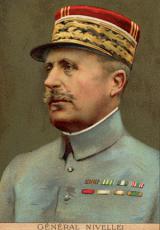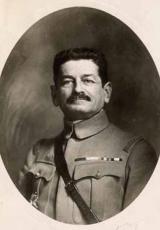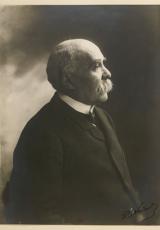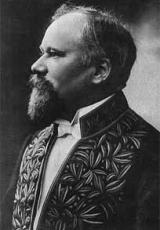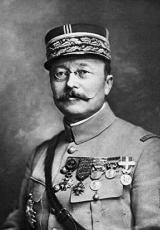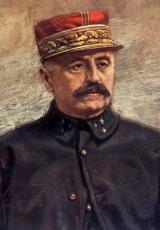Le Chemin des Dames

Corps 1
Chemin des Dames (Ladies' Way) 1914-1918 Operations 1914-1916 Pushed back to the Marne, pursued by the 5th and 6th French Armies and the British, the 1st and 2nd Imperial German Armies beat a retreat on 11th September 1914 and withdrew to the north bank of the Ailette and the left bank of the Aisne, from Berry-au-Bac to Brimont Fort. The arrival of the 7th Imperial Army as reinforcements allowed the Germans to counter-attack: on 14th September they took Corbeny, then, in one week, seized Craonne, Hurtebise, Berry-au-Bac before taking up position on the Chemin des Dames. Between the Aisne and the Ailette, there is a line of high ground along which runs a narrow road - the "Way" that owes its name to the "Ladies of France", daughters of Louis XV. This is a remarkable defensive position, stretching for around twenty kilometres.
Corps 2
The British counter-attacked at Moussy, Vendresse and Braye. On 23rd, the French retook Berry-au-Bac, and fought at Le Choléra, Le Godat and Loivre. The allies had to dig trenches overlooked by the enemy, who launched powerful offensives. On 25th December, General Maunoury deployed his 6th Army on the Crouy sector, where fighting had intensified for possession of ridge 132. On 8th January 1915, the 55th Infantry Division and the Moroccan Infantry entered the fray. After five days of hand-to-hand combat, the enemy cleared ridge 132, seized Crouy and reached the suburbs of Soissons, routing the 6th Army, which had to re-cross the Aisne. Trench warfare continued throughout 1915 and 1916, from Soissons to Pontavert, as far as Berry-au-Bac and Sapigneul. This final sector was overlooked by ridge 108, the epicentre of mine warfare, where sappers dug vast underground earthworks, destroying them with 10-tonne mine explosions. In the Les Buttes woods there was incessant fighting using trench mortars and grenades. French offensives in 1917 In late 1916, General Joffre, Commander in Chief of the General Staff (GQG), was replaced by General Nivelle, who revised the plan for operations in 1917, choosing the Aisne as the point to break through enemy lines.
Together with the British, it was decided in late January/early February, to launch allied offensives on the Chemin des Dames, in Artois and in Flanders. In March, the enemy upset the odds by evacuating the Bapaume-Péronne-Noyon salient and falling back to better-established positions. During this evacuation, it laid waste everything in its path: 300 towns razed to the ground; 38,000 houses destroyed; churches, bridges and railways dynamited... At Coucy, the mediaeval castle - the largest in Europe - was severely damaged: 28 tonnes of explosives brought down the vast 60-metre high, 31-metre diameter keep. The Germans took with them all men aged between 14 and 60 and able-bodied women, leaving the others behind in utter destitution.
Nivelle not only maintained his plan of attack, he increased it and insisted on its implementation at the meeting held on 6th April at Compiègne attended by the President, Poincaré, and the Chairman of the Cabinet, Ribot. But the enemy, aware of the allied plans, reinforced his strength. On 16th April, the day set for the offensive, the 5th and 6th Armies of Generals Mangin and Mazel attacked at 6am, along 40km between Soissons and Reims. Intensive barrages had prepared the ground for several days, but many of the well-fortified German positions remained intact. The Colonial Regiments (the 20th Corps) advanced along the ridge on foot. The villages of Chavonne and Chivy, and the Mont des Sapins were taken, but around 9am, the attacking waves of the 1st Colonial CA failed at the Laffaux plateau, where the Marines and Senegalese troops could not hold out. The 2nd Colonial CA fared little better. Of the 5th Army, the 133rd Infantry took Loivre. The Les Buttes woods, ridge 108 and Courcy were seized. The Russian Brigades fought at Mont Spin, Sapigneul and Brimont. In the Le Choléra sector, the attack by two groups of French Schneider heavy tanks failed: 81 tanks were lost.
On the 17th, the infantry fought at Hurtebise, seizing the Ostel plateau and capturing La-Ville-aux-Bois. From 18th to 20th, fierce fighting took place at Craonne and Cerny-en-Laonnois. On every front the French failed to make headway and became exhausted, harassed by counter-attacks and bombardments. The offensive, halted on 22nd, was generally a failure. Almost 140,000 soldiers of the French Army were put out of combat. A serious crisis of morale shook the troops at the front. Rebellions broke out, affecting units from around fifty divisions, especially in the Aisne and the Marne. On 15th May, Generals Nivelle, Mazel and Mangin were replaced by Pétain, Micheler and Maistre. The unrest reached a peak and exemplary executions took place: around 50 soldiers were shot; 357 were condemned to death before their sentences were commuted to forced labour by the President. A variety of measures were taken in favour of the troops - passes, leave, better food, etc - and calm was restored in three months.
The fighting continued over the Chemin des Dames. On 5th May a new army, the 10th under General Duchêne, moved to the front to restart the attacks. Men of the 36th Infantry Division from the Basque country, the Béarn and the Landes captured Craonne and climbed the slopes of the California plateau, from where they repulsed all counter-attacks. On the western ridge, the infantry of the 6th Army advanced 4 km whilst heavy tanks and armoured infantry seized the Laffaux sector and the colonial regiments fought at Vauxaillon. The following day, whilst the Imperial Prussian Guard attacked the 18th Languedoc Army Corps, the Casemates plateau was captured by the 114th Infantry and the Bordeaux units of the 57th. Attack followed counter-attack without respite. On 3rd June, the 10th Army fell back from Hurtebise to Craonne. On 25th June, the 152nd Infantry (the "Red Devils") took the Dragon's Cave. On 18th and 19th July, the enemy captured the Vauclerc plateau, only for the French to retake it on 24th. The Germans attacked the Dragon's Cave the following day, but the 68th and 90th Infantry held them off. On 29th, around Hurtebise, the Marines and Senegalese, having run out of water under a scorching sun, defended themselves among the rotting corpses using grenades. The fighting continued with endless infantry action and artillery bombardments comparable to the worst of the "hell" on the Somme and at Verdun in 1916.
According to the new precepts of the General Staff in Compiègne (General Pétain and Major General Debeney), General Fayolle gave the order to the 6th Army to capture Malmaison Fort in order to force the enemy to cross the Ailette valley once again. At 5.15am on 23rd October, following a continuous 6-day artillery barrage by over 2000 pieces, the infantry supported by 68 heavy tanks, advanced 12 km. The Malmaison high ground was seized, the fort stormed by a battalion of the 4th Zouaves whilst the Marines and infantry cleared the area. The 75th infantry took the knoll at Laffaux, and the 1st BCP the Montparnasse quarries.
After two days of fighting, the Alpine Chasseurs of the 66th "Alsatian" Infantry - reached the Ailette. Pargny-Filain was captured and the Pinon forest cleared. The advance was 6 km. The enemy was forced to abandon the eastern section of the ridge, including Craonne; 200 guns were lost and12, 000 men taken prisoner.
Lines of Communication in Spring 1917 At the start of 1917, the railway lines linking Laon to Reims and Soissons were cut by the line of trenches. All that remained was a secondary line that followed the valley of the Vesle. Because of the offensive, three supply lines were organised and handling stations were added to the Ardre valley line. In March, the German retreat allowed a line to be added alongside the Aisne connected to the northern network at Crouy with two supply stations. In total, engineers provided the region with 510 km of railway lines. At the same time a network of military roads was established with 16,000 men using 450,000 tonnes of materials.
In this way, the artillery could be kept re-supplied: on 16th April alone it used 1,135,000 shells (one 75-mm gun for every 23 metres of front). The Medical Service set up several evacuation hospitals containing 3,000 beds each and all flooded under the influx of wounded from the first day of the offensive. From 16th April to 15th May, more than 300 trains used the Fère-en-Tardenois to Meaux line reserved for medical trains, transporting almost 80,000 sick or wounded. The battles of 1918 At dawn on 27th May, supported by the fire from thousands of guns, the Imperial crown-prince's army groups charged the front occupied by the army group under General Franchet d'Espérey. It was Duchêne's 6th Army that took this titanic blow over 90 km.
8 French and 3 British Infantry Divisions were crushed by 20 German divisions, who had reached the Aisne by 8am. By 8pm, the enemy was at the Vesle, having recaptured the Chemin des Dames. On 29th May, the Germans seized Soissons and Fère-en-Tardenois reaching the Marne at Dormans and Château-Thierry the following day. Pétain established his HQ at Provins, with the Allied HQ (under Foch) at Bombon. The Second Battle of the Marne followed by the recapture of the Chemin des Dames began. For the latter sector, Foch planned a multiple battle - defensive ahead and to the East and counter-offensive on the West flank - led by the 4th, 5th, 6th and 10th Armies commanded by Gouraud, Berthelot, Dégoutte and Mangin. The fighting at La Crise, Vauxbuin, and Missy-aux-Bois where the Renault FT17 tanks attacked for the first time, held the enemy up. The "Bois le Prêtre Wolves" (128th Infantry) barred the road to Villers-Cotterêts. American units defended the Belleau wood, ridge 204 and Château-Thierry. On 18th July, the 10th Army brought its tanks through the Retz Forest and advanced 7 km towards Soissons. Fighter and bomber aircraft flew more missions in support of the infantry. On 19th, Mangin took 17,000 prisoners. The 1st US Infantry captured Berzy-le-Sec, the Moroccan Division was at La Crise and Villemontoire was cleaned up by the 51st Scottish Infantry.
On 2nd August, the 11th Infantry Division retook Soissons, visited two days later by Chairman of the Cabinet, Clemenceau. On 4th , the allies recovered all lost ground as far as Vesle. On 23rd, the 10th Army reached the Ailette and the banks of the Aisne. On 30th, it breached the enemy lines at Coucy-le-Château. On 2nd September, the 162nd infantry seized the Crouy plateau, whilst the Foreign Legion captured the ruins of Terny-Sorny, taking 500 prisoners. Over the next few days, the Marine Commando Battalion captured Moulin de Laffaux. Between 14th and 28th, Mangin's army retook the Pinon-la Malmaison sector. On 30th September, the 5th Army crossed the Vesle and retook the Saint-Thierry massif, followed by Berry-au-Bac. The Italians of the 2nd CAI under General Albrici fought on the Aisne, near Chavonne. They took the ruins of Soupir, advanced via Vendresse and Troyon, captured Cerny- en-Laonnois, moved down to the Ailette and reached Sissonne on 15th October. The French retook the forest at Saint-Gobain and Craonne. The Chemin des Dames sector was then recaptured and on 13th October, General Mangin entered liberated Laon.


